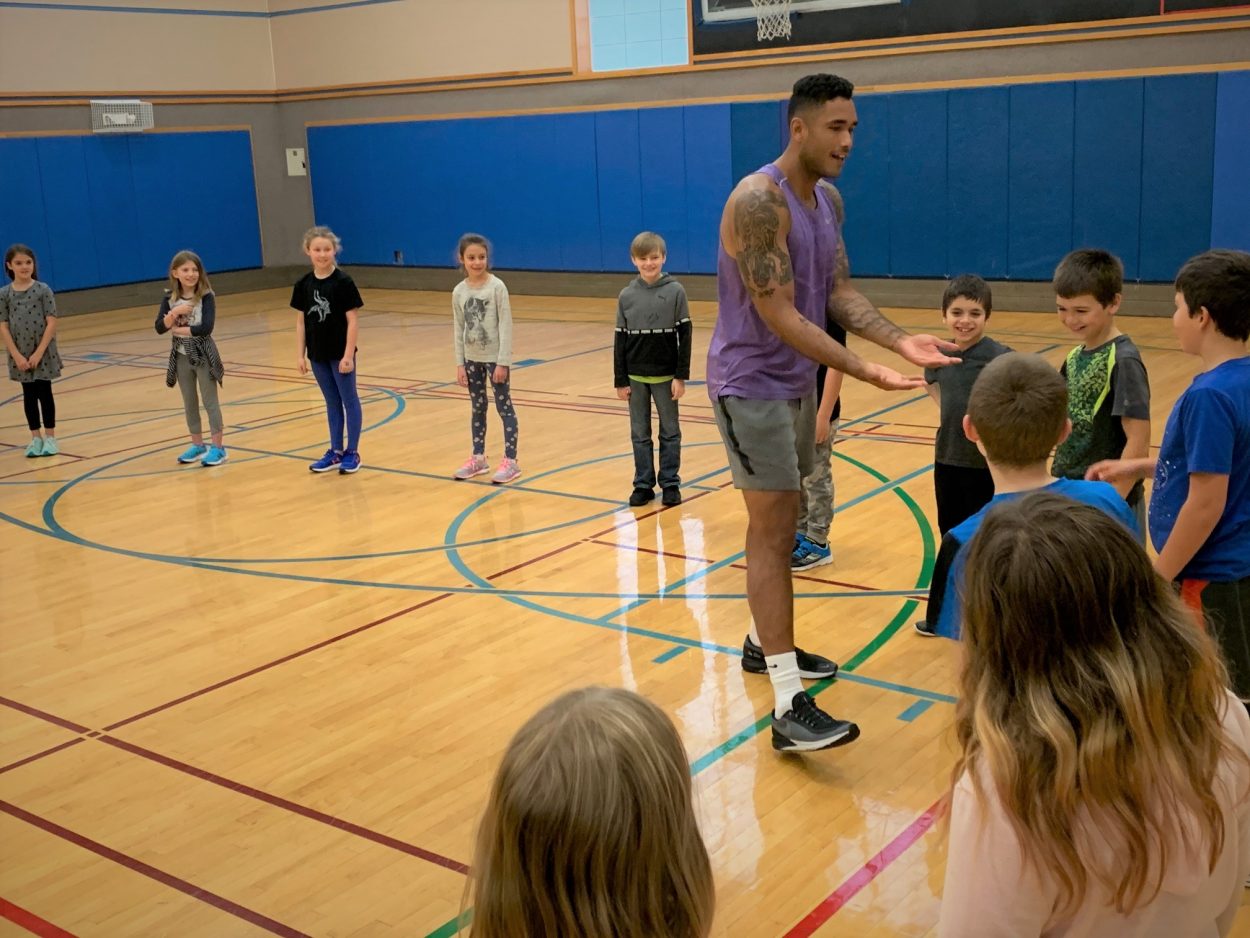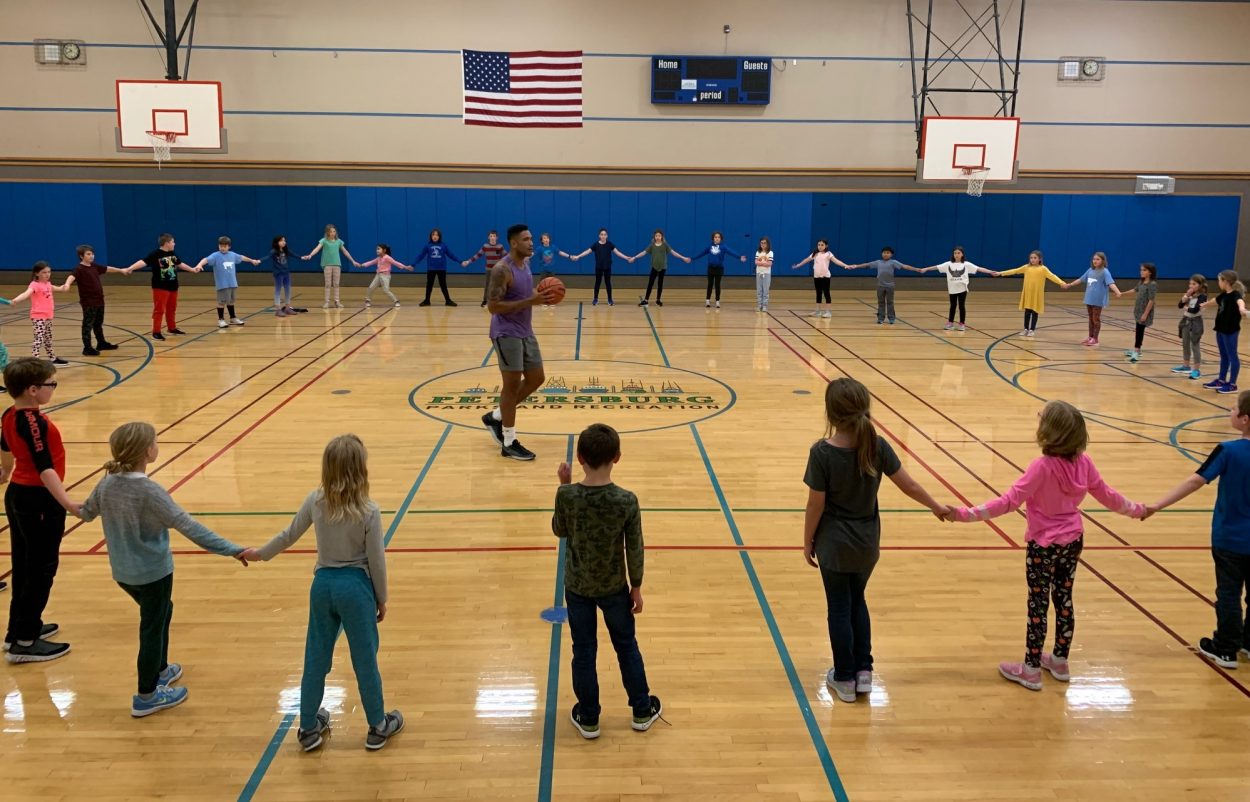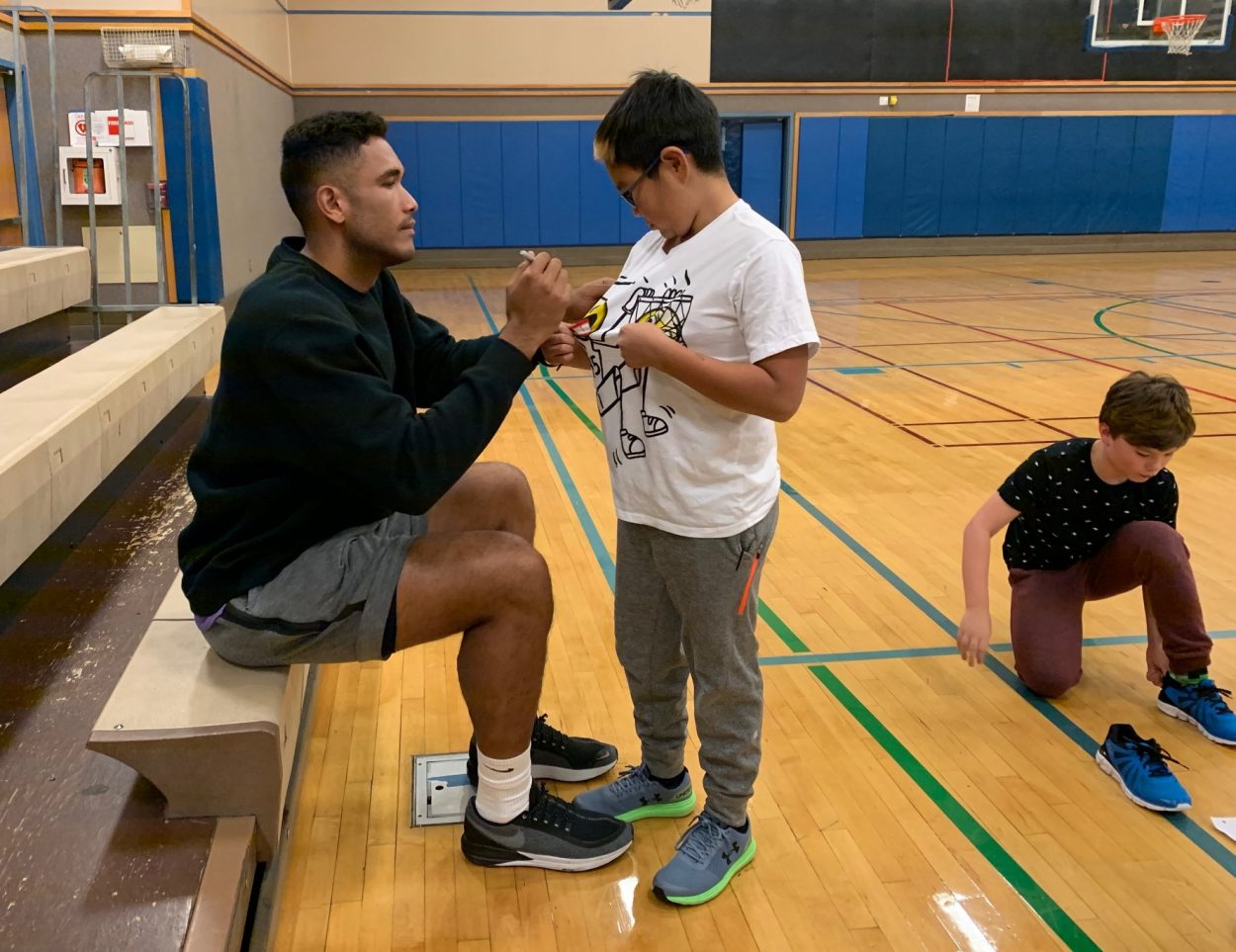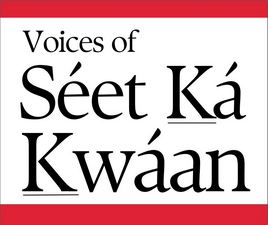
The Haida language, Xaat Kil, is endangered with only five fluent speakers left. This is personal for former NBA basketball player, Damen Bell-Holter. As Angela Denning reports from Petersburg, he’s traveling around Southeast Alaska teaching students about cultural awareness and a little bit of his language.
About 45 fourth graders are in the school gymnasium learning some Xaat Kil (pronounced HAWD-kil).
The kids are standing in a large circle and in the middle is 6 foot 9 inch tall Damen Bell-Holter. He’s a former Celtics basketball player, and Haida, originally from the village of Hydaburg on Prince of Wales Island. He’s now the Director of Youth and Community Development at Sealaska Corporation based in Juneau.
After the lesson is over, Bell-Holter invites the students in closer.
And he gives them a challenge. He asks them to go to the library or search on the internet to learn more about indigenous cultures in Southeast: Tlingit, Haida, Tsimshian, and the Taltan Tlingit.
“The more you guys learn about it, you guys might find out, you might have some Alaska Native history in your family,” Bell-Holter said. “You might. There’s a good possibility.”
Bell-Holter tells the students that his native identity made him successful.
“The only reason I went to the NBA, the only reason I was able to play on television, the only reason I made it all over the world is because I knew who I was,” he said. “I made sure that I was very very proud of where I came from and who I came from.”

Not all of Bell Holter’s fans are children.
“He inspired me even more to be open about my story,” said Disney Williams who is traveling with Bell-Holter as a fellow with the Alaska Fellowship Program. She’s originally from Metlakatla and also lived in Unalaska. She says she saw a lot of domestic violence and substance abuse growing up.
“As a young person I didn’t fully understand the trauma that so many communities have gone through and are still going through,” Williams said.
She’s talking about generational trauma and historical trauma; the colonization and cultural assimilation of Alaska’s Indigenous cultures. Williams says now it’s being talked about and she’s seeing positive change.
“As a state, as districts, as communities, we are working to dismantle that, dismantle that generational trauma and address it head on,” she said.
Bell-Holter agrees that there is more cultural awareness. But it takes work. The 29-year-old grew up learning about his language and culture from his mother but he says many others did not. Like dozens of villages in Alaska, Hydaburg saw missionaries come to town and demand assimilation.
“[They] said you’re done speaking the Haida language and they burned all of our totem poles, they burned all of our regalia, and I remember hearing those stories from my mother so I was very fortunate as a young kid, my mom was teaching me real history,” Bell-Holter said. “I realized how important that was as soon as I started navigating through the world. I was like, ‘Okay, this is tough, this basketball world is tough, but my ancestors had to go through so much just so I could do this.”
Soon, new students—5th graders– are entering the gym for their PE class with the tall basketball star. Some of them line up to get autographs on their tennis shoes and shirts.

Bell-Holter is spreading his message one school and one community at a time—that it’s cool to be Native and to speak the language.











